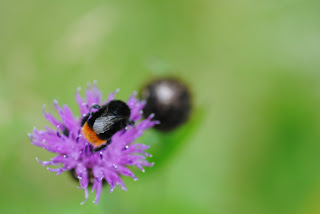 A while ago I penned an article about having a hedge for wildlife, in this article I plan to discuss how to look after it.
A while ago I penned an article about having a hedge for wildlife, in this article I plan to discuss how to look after it.Cared for adequately, hedges are good food sources, and somewhere to shelter for a number creatures.
Don’t prune hedges to often as this can cause loss of fruiting capacity and shape. Pruning a third of the current season’s growth to within 3 inches of the previous season’s will certainly encourage bushiness.
Never cut all your hedges back yearly, leave some unpruned. Many hedges such as privet and hawthorn fruit on growth formed in the previous year. To cut the entire hedge back limits fruiting. Many people I have known have never seen a privet berry as they cut them within an inch of their life, often 3 times a year.
Try to stagger cutting your hedge, maybe one section in year 1, another in year 2 and another in year 3. Then return to the first section thereafter. You will build growth of differing ages and will have a better cycle of flowering and fruiting.
Prune after berries have been consumed by birds and never in the breeding season.
If you have some deadwood in the hedge, leave it, it’s a great micro habitat in itself, and try laying a hedge if it is gappy. Again staggering this work so you have different aged growth.
The world won’t come to an end if your hedges are not cut every week. Leaving a few unkempt sections as hedges will form green corridors interlinking a number of gardens.
Go on think outside of the box a little, and watch the wildlife come flooding in.
Happy Gardening!
Stuart Mabbutt, Wildlife Gardening Specialist
01865 747243
Guest blog via English Cottage Garden Nursery












